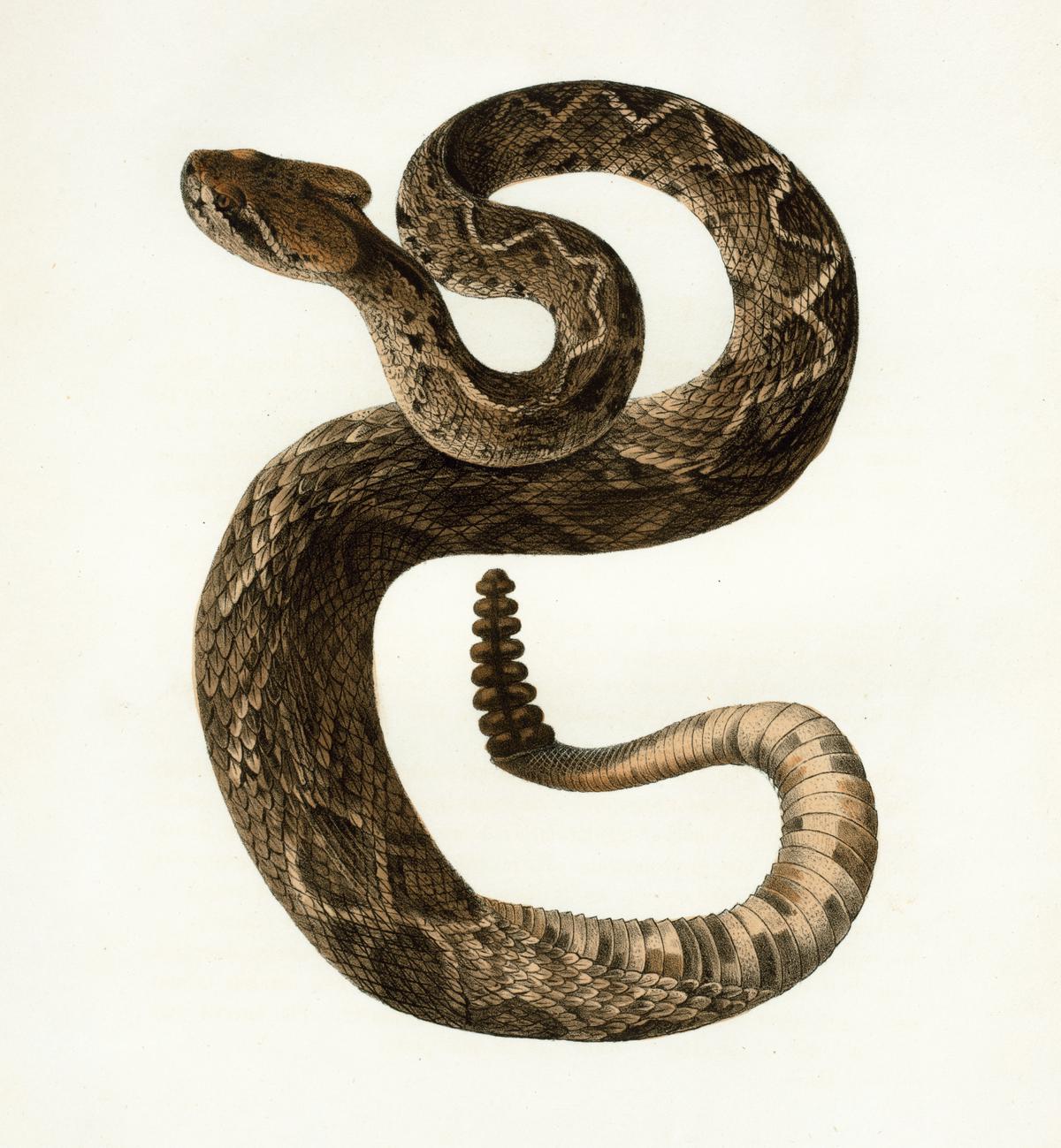In the realm of spirituality, dreams hold a significant position and are often seen as messages or premonitions from the divine. Among the myriad symbols that populate our dreams, the figure of the snake emerges with complex connotations, especially within the biblical context. Notoriously, the snake marks its appearance in the scriptures as a symbol of evil and temptation, most prominently featured in the narrative of Adam and Eve’s expulsion from the Garden of Eden. However, the interpretation of dreaming about snakes in biblical scripture moves beyond this singular interpretation, essentially reflecting an intersection of cultural, cognitive, and psychoanalytical perspectives. This exploration aims to delve into the biblical significance of snakes, the role of dreams and their interpretation in biblical scripture, the general understanding of snakes in dreams, and then ultimately integrate these areas to interpret the biblical meaning of dreaming about snakes.
The Biblical Significance of Snakes
An Exploration of the Biblical Significance of Snakes
It is undeniable that the Bible presents a tapestry of anthropological, historical, and cultural symbols, each carrying a significance that has reverberated through centuries of religious thought. Among these symbols, the snake stands as one of the most conspicuous and widely analyzed. Its multifaceted depiction in biblical text warrants a deep, careful analysis.
The snake’s biblical debut in Genesis 3:1 as the craftiest of the wild animals crafted by God sets the stage for its frequent associations with cunning and deceit. Engaging Eve in a conversation that leads to the consumption of the forbidden fruit represents it as an agent of mankind’s fall. Thus, the snake becomes synonymous with temptation, forever etching its image into global religious and cultural consciousness.
This characterization of the snake as a symbol of evil and deceit is certainly prevalent, but biblical references to snakes often evoke more nuanced interpretations. In Numbers 21:8-9, God instructs Moses to create a bronze snake and mount it on a pole so that anyone who had been bitten by a poisonous snake, and looked upon this symbol, would live. This reference invokes the snake as a symbol of healing and salvation – a paradigm shift from its earlier biblical portrayal.
There is no absolute consensus among scholars and theologians around the symbolic interpretation of biblical snakes. Some posit that the snake’s dual-faced symbolism represents the dichotomy of good and evil inherent in man’s nature, while others suggest a reminder of humanity’s need for vigilance against temptation.
Further into the New Testament, the snake’s significance evolves, incorporating layers of symbolism derived from the Greek and Roman cultures that surround the early Christian communities. The Apostle Paul’s encounter in Acts 28:3-5, where he remains unharmed after being bitten by a viper on the island of Malta, correlates the snake with paganism and sin – an influence suppressed by the power of faith.
Throughout the Bible, snakes maintain a significant role, embodying the persistence and consistency of sin, while paradoxically representing salvation. This complexity of the serpentine symbolizing both the source of temptation and the means of deliverance offers a depth to the biblical narrative and its various themes of sin, redemption, and grace. The dichotomy serves as a constant reminder of humanity’s battle against temptation, its propensity for moral fallibility, and the urgency of redemption.
In the metaphorical language of the Bible, the snake has held different roles, shifting from antagonist to savior, embodying both temptation and deliverance. Its depictions serve to intensify the encompassing themes of spiritual struggle, demonstrating the complexity of biblical storytelling and the richness of its theological underpinnings. Thus, the biblical snake, more than a simple character in religious narratives, thrives as a potent symbol – challenging, redeeming, and enriching the way mankind understands both sin and salvation.

Dreams and their Interpretation in Biblical Scripture
Beyond the inscrutable world of snakes, biblical scriptures—sprung from the amalgam of cultural, philosophical, and historical contexts—are replete with accounts of dreams and their interpretations. Dreams, in the Bible, hold significance as divine communiques, serving as interfaces between the abstruseness of divinity and the limitations of mortal comprehension.
To commence our exploration, let us acknowledge Joseph, the son of Jacob, in the Old Testament. This enigmatic character is principally known for his impressive dreams—portending his future status—and his aptitude in deciphering others’ dreams. Undoubtedly, the most famous of these episodes is Pharaoh’s confounding dreams of seven lean cows swallowing seven healthy cows and seven thin ears of grain devouring seven full, ripe ears. With adept discernment, Joseph interpreted the dreams as a forewarning of seven years of prosperity followed by seven years of devastating famine, facilitating strategic planning to avoid societal catastrophe.
In the book of Job, another distinctive approach towards dreams emerges. Through Job’s dialogue with a young man named Elihu, it is posited that dreams can serve as divine interventions to deter individuals from embarking on destructive paths. Here, dreams are depicted not merely as prophetic announcements, but as vital instruments for personal rectification and transformation.
Interestingly, the New Testament sustains the indispensable role of dreams as divine conduits. The Gospel of Matthew details how an angel appeared to Joseph, the husband of Mary, in a dream, cautioning him to escape to Egypt to safeguard the child Jesus from King Herod’s murderous intent.
While dreams often serve as a medium for prophetic revelations or divine cautionary tales, contrarily, they are sometimes presented as fallible and unreal. This can be appreciated in Psalms, where the psalmist describes life’s transience, paralleling it to a dream. This stature of dreams as ephemeral, undependable realities provides another layer to the comprehensive biblical perspective on dreams.
Conspicuously absent is a consistent methodology for dream interpretation in biblical texts. Unlike certain pagan traditions with established dream lexicons, each biblical dream appears fundamentally singular and intimately tied to its individual context. This absence of a systematic dream-interpretation model illuminates the Bible’s prioritizing of divine agency and individual revelation over universally applicable rules or symbols.
In conclusion, dreams in biblical scriptures bear multifaceted roles: they are prophetic, corrective, even existential mirrors of life’s fleeting nature. Despite their diversity, all these roles underscore one inherent theme. Dreams serve as potent reminders of the divine, invigorating the mundanity of earthly existence with an immersive tapestry of transcendental interactions, fostering a dialogue between the earthly and the divine, the known and the unknown, the temporal and the eternal.

Snakes in Dream Interpretation
Building upon the rich textual exploration of snakes and dreams in the Bible, the progression of discourse must now zero in on the standard dream interpretation of snakes. It’s important to necessarily underscore that dream interpretations are highly subjective and should seldom be viewed in isolation but in conjunction with culture, context and individual psychology.
Nevertheless, in the realm of psychoanalysis, snakes have been associated with representations of threat and fear due to their unpredictable movements and venomous bites. The eminent Sigmund Freud postulated the interpretation of snakes as manifestations of sexual desire, attributing this to their phallic shape. This perspective was further corroborated by another esteemed psychoanalyst, Carl Jung, who proposed that snakes in dreams might symbolize transformative processes owing to their ability to shed their skin and essentially, be reborn.
Evidently, a strong parallel can be drawn from religious annotates of snakes representing temptation, sin, healing, and rebirth, to psychoanalytical interpretations regarding fear, desire, threat, and transformation.
The presence of snakes in one’s dreams can also be discerned as warnings of physical or emotional harm, reflective of an inner conflict, a psychological struggle or an indication of suppressed desires.
The prolific Swiss psychiatrist, Carl Gustav Jung, upon further exploring dream analysis, asserted the role of the ‘collective unconscious’ – stipulating universal symbols or ‘archetypes’ such as snakes, which embodied collective human experiences, passed down through ages.
In the context of Jungian psychoanalysis, a snake may symbolize wisdom, healing, or life energy, reflective of ancient mythologies and spiritual practices where snakes often embody heightened spiritual awareness or enlightenment. But snakes can also represent duality – a dualism of high positive or negative emotional associations.
Synchronizing biblical symbolism and dream interpretations, the various aspects around a snake’s appearance in a dream are determined by an interplay of the dreamer’s personal association with the serpent, cultural connotations, and the circumstances within the dream.
In conclusion, the snake’s incorporation into the dream sphere holds a profusion of interpretations – an exemplification of fear or desire, an indicator of transformation or a spur for spiritual awakening. Such motifs continue to thrive in our collective subconscious, navigating our understanding of dreams, and their subsequent interpretations.

Biblical Interpretation of Dreaming about Snakes
Having delved into the multi-dimensional roles of snakes in Biblical scriptures and the enigmatic world of dreams, our exploration now turns towards the uncharted territory of inferring potential meanings from dreams about snakes in the Biblical context.
Firstly, it is quite crucial to acknowledge that dreams, due to their inherently subjective nature, are interpreted diversely across different individuals and cultures. While some perceive snakes in dreams as the embodiment of threats and fears, others view them as symbolizing sexual desires, thereby illustrating the psychoanalytical perspective. This variegation in dream interpretation stems from the individual’s emotional state, personal experiences, and cultural context, thereby disputing the feasibility of a universal inference.
Famed Swiss psychiatrist, Carl Jung, postulated the concept of the collective unconscious, where universal symbols, such as snakes, surface in our dreams due to their entrenched symbolism across civilizations. Jung’s theory resonates with the snake symbol being recognized as a transformative entity, representative of the process of shedding old identities and blooming anew, much like the shedding of the snake’s skin.
Religious associations often juxtapose the snake with diametrically opposing themes such as temptation and sin with healing and rebirth. Dreaming of snakes might thus be seen as a powerful signal, a potential warning of impending physical or emotional harm or conversely, as a harbinger of healing and resurgence.
Interestingly, ancient mythologies and spiritual practices have often revered the snake as a symbol of wisdom, life energy, or even deification. Deviating from the Judeo-Christian associations relate snakes with evil and deception, such cultures imbued the serpent with reverence and divine attributes.
Snakes are emblematic of duality, portraying the interplay of positive and negative polarity. The snake in dreams can be a metaphorical embodiment of this moral duality, representative of inherent good and evil, wisdom and deception, or even life and death.
The interpretation of snakes in dreams is inevitably subject to a myriad of variables including personal association, cultural connotations, and dream circumstances. Often, the interpretation is not merely an echo of biblical precedents but is intertwined with psychological factors that contribute towards the formation of dream content.
Therefore, while the biblical interpretation of dreaming about snakes unveils a wide spectrum of possibilities, each illuminated facet remains contingent upon the dreamer’s personal, psychological, cultural, and spiritual landscape. As such, the art and science of dream interpretation encourage an unprejudiced, open-ended exploration, which resonates harmoniously with the spirit of academic and scientific pursuit that constantly seeks to unravel the mysteries of the human consciousness.

Practical Implications
As we continue to delve deeper into the biosphere of biblical dream interpretations, the interaction of symbolism, psychoanalysis, and spirituality lays a fertile ground for better understanding. Recognizing the subjectivity and diversity inherent to dream interpretation uncovers a matrix uniquely knitted by the individual’s psyche, cultural norms, and personal experiences, which reflects heavily onto their dream states, especially in the presence of universally recognizable symbols such as snakes.
The phenomenon of dreaming has piqued the interest of scholars throughout history. As a pivotal subject of concern, the interpretations that emerge are cloaked in the colors of the interpreter’s contextual understanding and the dreamer’s personal connotations. Through this lens, it is prudent to engage the psychoanalytical school of thought, established by the astute Sigmund Freud and developed further by the dedicated Carl Jung.
In a voyage through Freud and Jung’s labyrinthine ideas, one would find snakes slithering amidst shadows and archetypes. These luminaries viewed these reptilian symbols as corresponding to primitive fear, threat, or even sexual desires. Jung, further, emphasized the presence of a collective unconscious, a reservoir of mankind’s experiences, brimming with universal symbols such as the snake. When these figures appear in one’s dreamscape, they keenly spotlight the interplay between mankind’s universal experiences and personal adaptations.
Religion, undeniably, has had profound effects on mankind’s collective unconscious and has left lasting imprints on our perception of symbols. In the realm of biblical dream interpretations, snakes have been associated with temptation and sin, while also symbolizing healing, rebirth, and transformation. The breathtaking paradoxical image of the snake being both the tempter and the healer portrays the enigmatic richness of biblical writing and mirrors the duality that snakes symbolize in dreams: the interplay of positive and negative emotions.
Moreover, snakes carry potent symbolism in various ancient mythologies and spiritual practices. For instance, they may represent wisdom and knowledge, life energy, fertility, and immortality. The multifactorial range of meanings attributed to snakes in various cultures adds another layer of complexity to its interpretations in dreams.
It is important to remember that the interpretation of snakes in biblical dreams is not a deterministic process or a hardened science. Personal association, cultural connotations, and the circumstances of the dream must all be taken into account. An interpreter versed in both theological and psychological contexts can guide individuals through this open-ended exploration of meanings. Yet, each dream, like an intricate puzzle, reveals its full picture only when the dreamer actively participates in interpreting it.
In conclusion, we arrive at the intersection of biblical interpretations, Freudian psychoanalysis, Jungian archetypes, and spiritual symbolism when we consider the practical implications and applications of snake dream interpretations. Even after centuries of research, we are only just scratching the surface of this intricate subject, highlighting how fascinating and inexhaustible the human mind truly is.

The exploration of dream interpretation, particularly in relation to symbol of snakes, serves to underscore the comprehensive nature of biblical understanding which negotiates a balance between the spiritual, cognitive, and societal realms. The intertwining of these perspectives, delivers a nuanced interpretation of snake dreams in a biblical context that contains implications not only confined to the realm of spirituality, but extend to broader aspects of our life. By observing the symbolism of snakes within biblical narratives, interpreting dreams as channels for divine revelation, and appreciating the cultural and personal aspects of dream interpretation, we are encouraged to integrate these insights into our daily lives, thereby enriching our spiritual journeys and deepening our understanding of ourselves, the world around us and our personal faith journeys.







